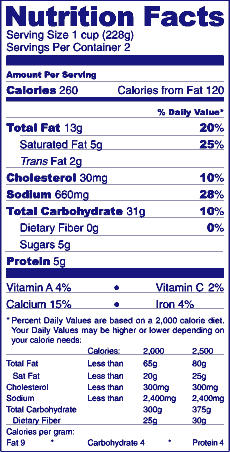Medical nutrition therapy and physical activity are key components of optimizing glycemic control and lowering the risk of diabetic complications.
Medical Nutrition Therapy (MNT)
All people with diabetes should be offered medical nutrition therapy. The ADA recommends that intensive nutrition counseling be done in conjunction with a registered dietician trained in diabetes. This counseling can be reinforced by the physician, nurses, and other members of the interdisciplinary team. MNT focuses on weight management, carbohydrate counting, and reduced dietary fat.
Weight Management
There is a strong correlation between being overweight and obese and developing type 2 diabetes. It can also make diabetes difficult to manage. Obesity is also an independent risk factor in hyperlipidemia, hypertension, and cardiovascular disease. Weight loss can prevent diabetes in those with prediabetes, lower cardiovascular disease risk (in part through blood pressure and lipid profile improvements), decrease abdominal fat, and improve glucose control. This makes moderate weight loss a vital strategy in both patients at risk for diabetes and in those who have diabetes. Weight loss occurs in most through a reduction in energy intake and by increasing activity.
| ADA Weight Management Recommendations |
|---|
|
Carbohydrate Counting
The main macronutrients are proteins, fats, and carbohydrates. A 2012 systematic review found no evidence of an ideal mix of macronutrients. However, carbohydrates intake should be steered towards sources such as vegetables, fruits, whole grains, legumes, and dairy products, and away from sources that contain added fats, sugars, or sodium. Patients should substitute more nutrient-dense foods for sucrose-containing foods with the same calories, and avoid sugar-sweetened beverages. Carbohydrate intake monitoring through formal counting or experience-based estimation is a key tool in managing diabetes. Carbohydrate counting can limit hyperglycemia, improve weight loss, reduce insulin resistance, and prevent complications of diabetes. The amount of grams of carbohydrates and type of carbohydrates in food will influence blood glucose levels. The total amount of carbohydrates can be monitored by carbohydrate counting or exchange plans. The general idea of carbohydrate counting involves using the convention that 15 grams of carbohydrates = 1 “carbohydrate choice.”
| For Weight Loss | To Maintain Weight | For Very Active People | |
|---|---|---|---|
| Women | 2-3 choices/meal | 3-4 choices/meal | 4-5 choices/meal |
| Men | 3-4 choices/meal | 4-5 choices/meal | 4-6 choices/meal |
The advent of nutrition labels allows people to see the estimated carbohydrates they are consuming. As of 2014, the FDA is proposing updated nutrition labels which are on the horizon.

Source: National Agricultural Library, Agricultural Research Service, USDA, 2003

Diabetic patients and those using insulin should consult with registered nutritionist before starting carbohydrate counting or exchange programs. The ADA and other societies have many reading resources on calorie counting.
Dietary Fat
For patients who would benefit from lowering their LDL cholesterol, regardless of diabetes, the ACC / AHA 2013 guidelines recommend that total fat be 25 – 35% of total calories and <7% of total calories come from saturated fat. The same guidelines recommend reducing total fat- and trans fat-derived calories (with no set percentage defined). Saturated and trans fatty acids are the principle components of LDL cholesterol, which is a major factor in cardiovascular disease. For patients with diabetes, the guidelines stress quality over quantity of fat. Studies have shown a positive correlation between: multi-unsaturated fatty acids (MUFAs, found in Mediterranean-style diets), long-chain n-3 fatty acids (EPA and DHA, found in fatty fish), and n-3 linolenic acid (ALA, plant-derived); and lipo-protein profiles, glycemic control, and cardiovascular outcomes.
Other Nutrition Considerations
- Supplementation with anti-oxidants (e.g., Vitamins C and E, carotene) is not recommended due to long-term safety concerns.
- Current studies have not found a benefit from n-3 (EPA and DHA) fatty acid supplementation.
- Sodium guidelines follow those of the general population (<2,300 mg/day) or for people with hypertension (further reduction).
- Evidence on fiber consumption is mixed for people with diabetes, and difficult to separate from patterns of carbohydrate consumption. Individuals at high risk for diabetes are encouraged to follow USDA guidelines (whole grains as half of all grain intake, and 14g fiber / 1,000 kcal).
The ADA has a fun and useful “Virtual Grocery Store” available to patients with access to the web.
Physical Activity
Another important method of achieving optimal glucose control is through physical activity. A combination of aerobic exercise and resistance training has more benefit than either one alone.
Physical activity has which effects on patients with diabetes mellitus?
Aerobic Exercise
Intensity of aerobic exercise is defined as:
- Moderate intensity aerobic exercise that achieves 50 – 70% of the maximum heart rate.
- Vigorous aerobic exercise that achieves >70% of the maximum heart rate.
| Moderate Intensity | At least 150 min / week distributed over 3 days / week with no more than 2 consecutive days without activity. |
| OR | |
| Vigorous Intensity | At least 75 min / week |
| OR | |
| Combination | Equivalent to the amount of physical activity outlined above |
Resistance Training
Resistance exercise training targeting all major muscle groups is recommended for all people with type 2 diabetes at least 3 times twice a week unless there is a contraindication. Each session should include 1 set of 5 repetitions of > 5 different resistance exercises involving the large muscle groups. Patients should progress to 3 sets of 8 – 10 repetitions at a weight that cannot be lifted more than 8 – 10 times. Among older men, resistance training improves insulin sensitivity just as well as or better than aerobic activity.
Cardiac Stress Testing Before Exercise
There are no clear guidelines on screening asymptomatic individuals with diabetes for cardiovascular disease.
Exercise in the Presence of Long Term Complications of Diabetes
Diabetic patients with retinopathy, peripheral neuropathy, and autonomic dysfunction may require more individualized exercise recommendations. Specific situations may contraindicate or modify certain types of exercise.
| << Glycemic Goals |